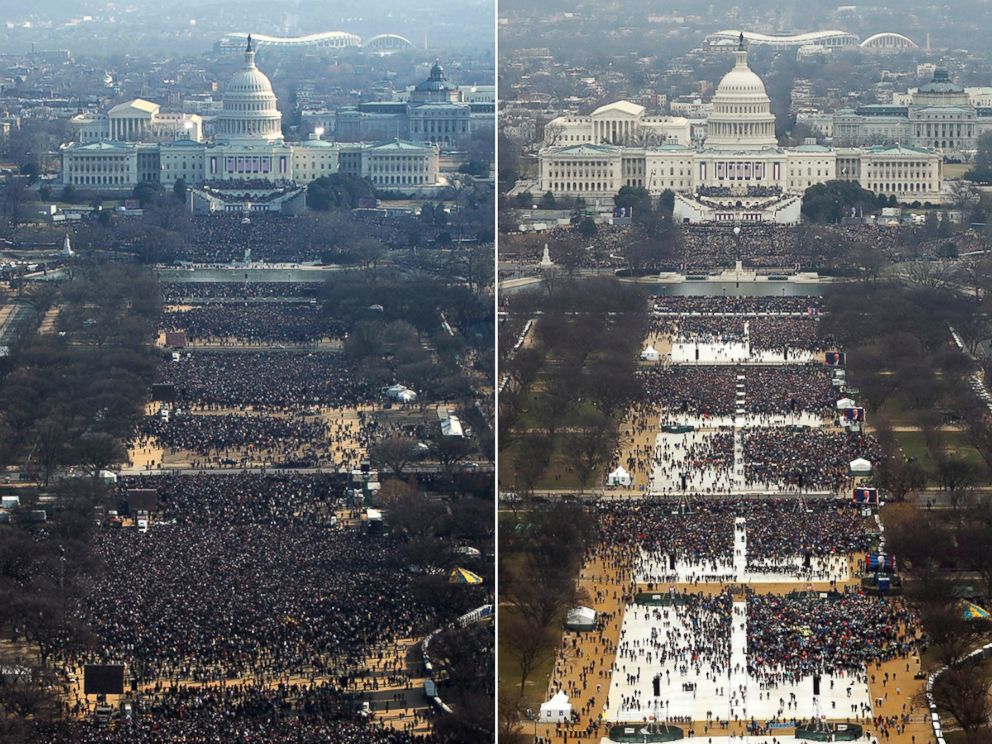By Sophia DaCosta
It is not coincidental that the concepts of democracy and demagoguery both originated from the same place. When democracy was born in ancient Athens, it was not long before people began to exploit the collective fears and beliefs of the common population. These politicians who would discredit the beliefs of elitists and feed into mass hysteria in order to take power were referred to as demagogues. As time has passed and as more people used these tactics, the definition of this nefarious method has remained mostly the same. In a contemporary sense, the term demagogue is used to describe leaders or politicians who utilize an arsenal of personal prejudices, false claims, and empty promises to seize power. Furthermore, discrediting experts and the media is one of the most effective tools that a modern demagogue can use to influence the public.
Only hours into his presidential term, Donald Trump and his staff continued this political trend of demagoguery. Sean Spicer, Trump’s press secretary, accused the media and news outlets of sharing inaccurate information about how many people actually attended Trump’s inauguration. He argued that photographs misrepresented the event. Spicer even claimed during his first press briefing that it was, “the largest audience to witness an inauguration, period.” In addition, the President himself argued that he must have seen between 1 and 1.5 million people. These claims were inaccurate.
In fact, a PolitiFact article highlighted just how wrong these statements were. In reality, it appears that somewhere between 300,000 to 600,000 people attended Trump’s inauguration. This is considerably less than the 1.8 million who were at Obama’s inauguration in 2009 and the 1 million at Obama’s inauguration in 2013. Spicer argued that these figures could not be properly calculated and claimed that the number of people who took the metro in the city could accurately represent attendance instead. While this concept appears to make perfect sense, numbers only further prove that he was incorrect. The metro ridership on January 20th, 2017, the day of Trump’s inauguration, was only 570,557 people compared to the 1.1 million people who rode the metro on the day of Obama’s inauguration in 2009.
Unfortunately, these statistics did not stop Trump’s “Fake News” claim from spreading. People using the hashtag #TrumpInauguration argued about who was actually spreading the misinformation. The left laughed at Trump’s and Spicer’s claims and the inauguration as a whole through various memes and news articles. Meanwhile, the right dove into a world of conspiracy theories and photoshop. Republicans all over the internet believed that Trump was correct, stating that the photos had been edited or taken from unflattering angles. They believed the media must have lied.
This belief can be attributed to basic psychological concepts like confirmation bias and motivated reasoning. It would be beneficial for a Trump supporter to believe that President Trump’s inauguration garnered a larger crowd than Obama’s, so they are inclined to agree with him and Sean Spicer. If this particular piece of misinformation was true, it would also validate Trump supporters’ preconceived notion that the media has always been biased against him. Furthermore, lying about inauguration attendance would be a way for the media to disenfranchise Trump and those who support him. This instance was not the first time or the last time that Trump argued that the media was misrepresenting his popularity.
From various twitter tirades about inaccurate polling to numerous claims that he actually won the popular vote in the 2016 election, Trump has spent most of his political career arguing that he has more support than the media would like people to believe. Trump recently demonstrated this behavior in response to the impeachment investigation. On October 1, 2019, President Trump tweeted an image of the United States that demonstrated which counties voted Republican and which counties voted Democrat during the 2016 election. The phrase “Try to impeach this” was written across the photo and it implied that most of the country had voted Republican in the election. This example not only ignores the fact that Democratic counties are smaller and have considerably higher population densities than the larger Republican counties, but it demonstrates how Trump and his supporters believe that he has gained the endorsement of the common American citizen as well.
Other American Presidents have also made this claim about their followers before. In 1969, President Nixon argued that a “silent majority” in the United States supported the Vietnam War, but were not as boisterous as those who protested against it. Nixon was attempting to downplay the resistance he was facing in hopes of encouraging support and remaining in power.
In a true representation of modern demagoguery, Trump has consistently discredited media and elitists in order to accumulate support. Like Nixon, he argues that he has the backing of the common citizen and that he speaks for them. From this standpoint, he has developed a group of avid supporters that believe that the media is biased and that, in this particular instance, the media would lie about how many individuals attended the 2016 inauguration.
Interestingly, his supporters do not appear to be the majority at all. According to a variety of polls, Donald Trump has a consistently lower average approval rating than most Presidents in recent American History. Despite what he may claim, Trump lost the popular vote in the 2016 election and the number of people who attended his inauguration was relatively small compared to other Presidents like Obama.
That being said, regardless of whether his voters accurately reflect the average American citizen, Donald Trump was still able to convince a substantial number of Americans that he represented ordinary people and their beliefs. He could not have won the 2016 election otherwise. Like the demagogues of ancient Greece, Trump has exploited the concerns of the common citizen. In turn, his supporters have begun to doubt and reject the opinions of non-partisan media sources. They believe that Donald Trump speaks for them.
